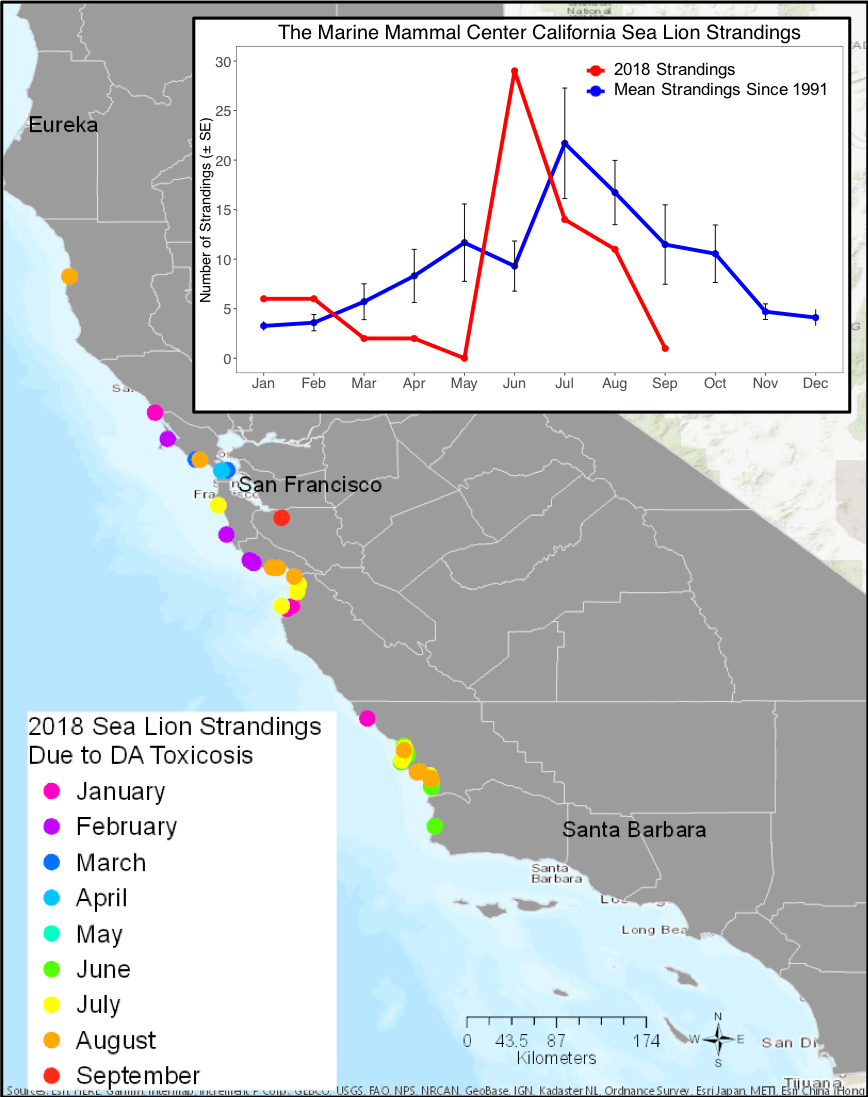Pseudo-nitzschia - C-HARM tells us where conditions are suitable for Pseudo-nitzschia spp. (all size classes) to grow well and where they might be more likely to produce domoic acid. In September, the probability of a Pseudo-nitzschia spp. bloom was still high all along the coast with higher offshore probabilities in the Southern California Bight than in previous months. Unfortunately, no new Harmful Algal Bloom Monitoring and Alert Program (HABMAP) sampling data were uploaded to public archive for the month of September, but we will be sure to add those once available. Time series of HABMAP data are plotted below for all of 2018 to give seasonal perspective. The highest CDPH measurements of Pseudo-nitzschia were inside Humboldt Bay.
Domoic Acid - C-HARM predicted the highest likelihood of particulate domoic acid (pDA) production in the Southern CA Bight, the offshore region of central CA, and to some extent in the nearshore zone of the North Coast, although with lower probabilities than in the previous month of August. Cellular domoic acid (cDA) predictions, which should tell us where Pseudo-nitzschia cells are likely to be most toxic on a per-cell basis, were still highest along the North Coast, particularly in the Humboldt County region and near Monterey Bay. The latter is consistent with the September shellfish advisory in Humboldt County as well as the CDPH phytoplankton monitoring. Unfortunately, DA values from the HABMAP sampling are not yet available at any of the pier locations. The only sea lion stranding from DA toxicosis recorded by The Marine Mammal Center in Sausalito was found in the upper reaches of the San Francisco Bay. It is difficult to know in which offshore or nearshore environment the animal acquired the DA.
Alexandrium - Much like the trend in the time series from the Harmful Algal Bloom Monitoring and Alert Program (HABMAP) data into August, Alexandrium spp. percent composition from CDPH shows no obvious activity or seeming risk of PSP for September.
Mean Probability of Pseudo-nitzschia Bloom for Sep 2018
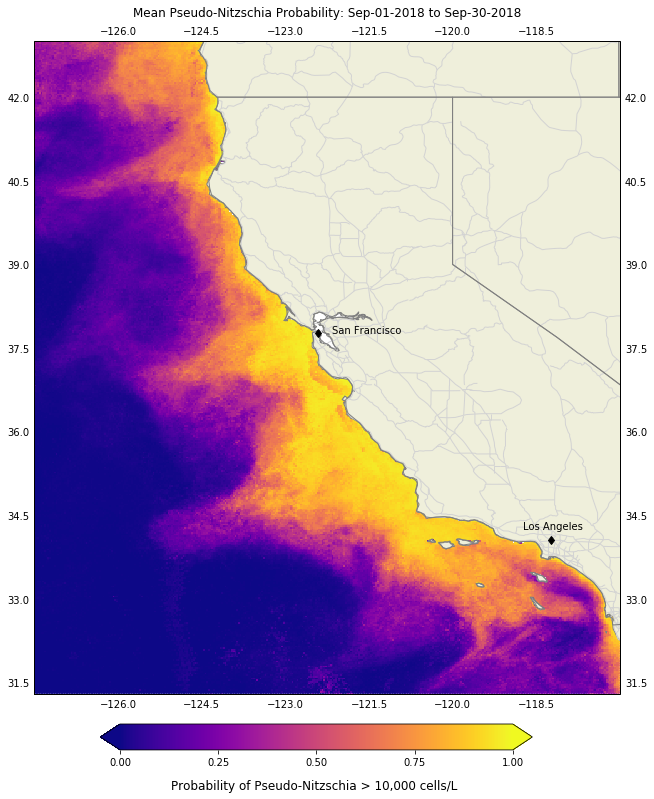
Mean Probability of Particulate Domoic Acid for Sep 2018
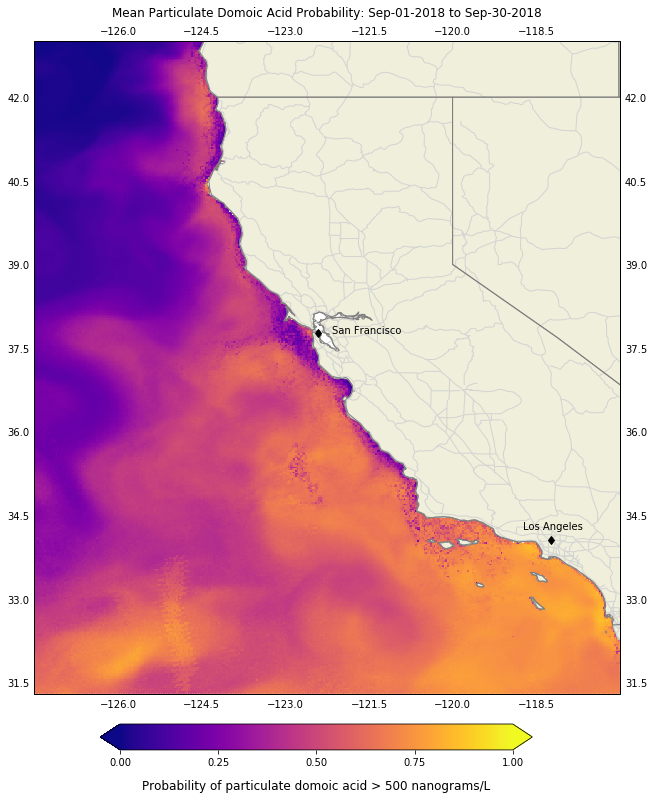
Mean Probability of Cellular Domoic Acid for Sep 2018
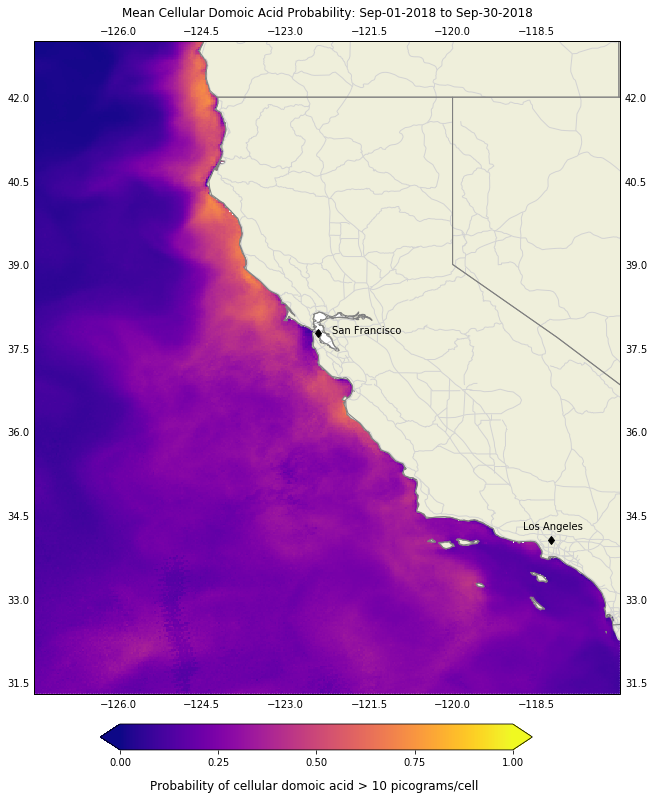
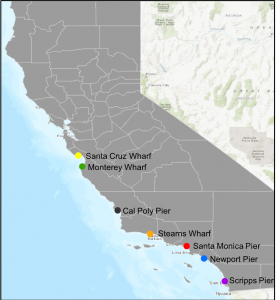
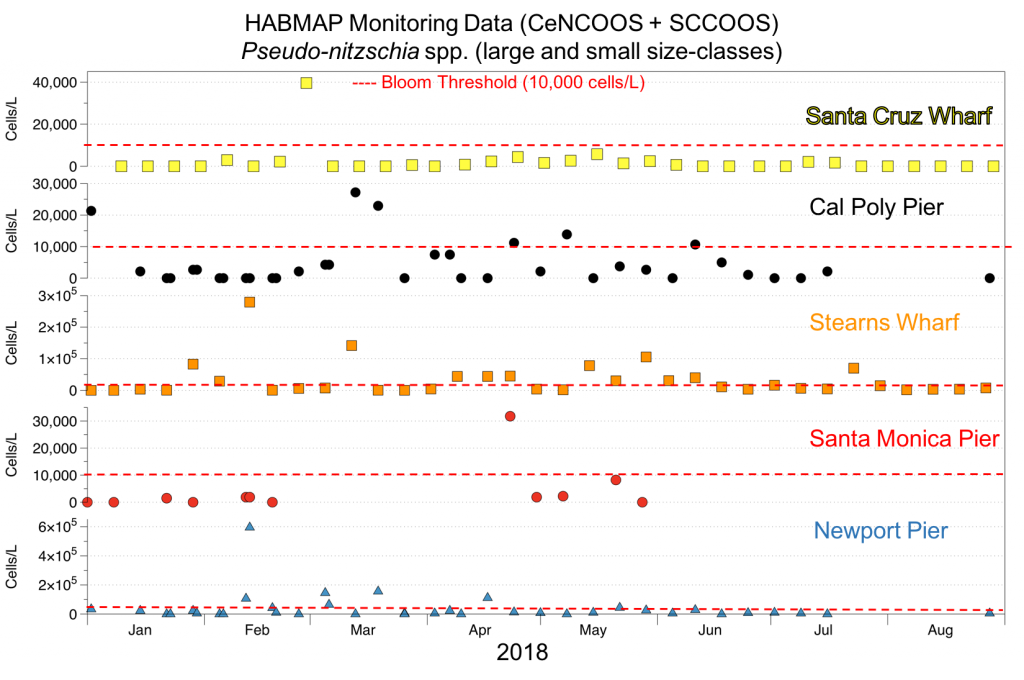
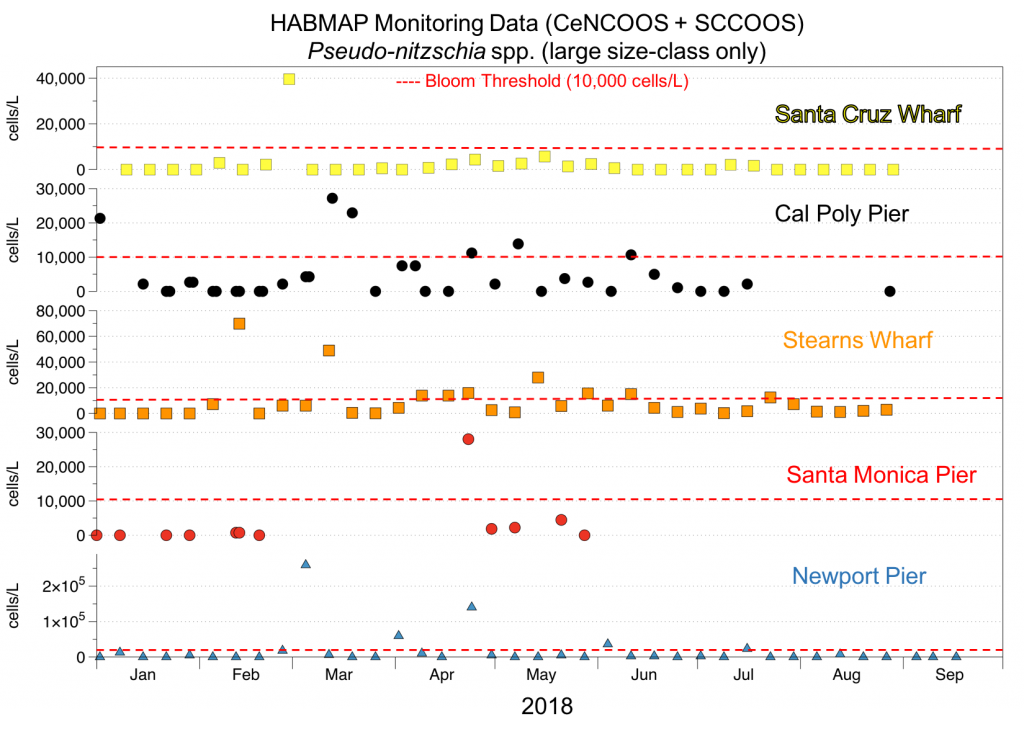
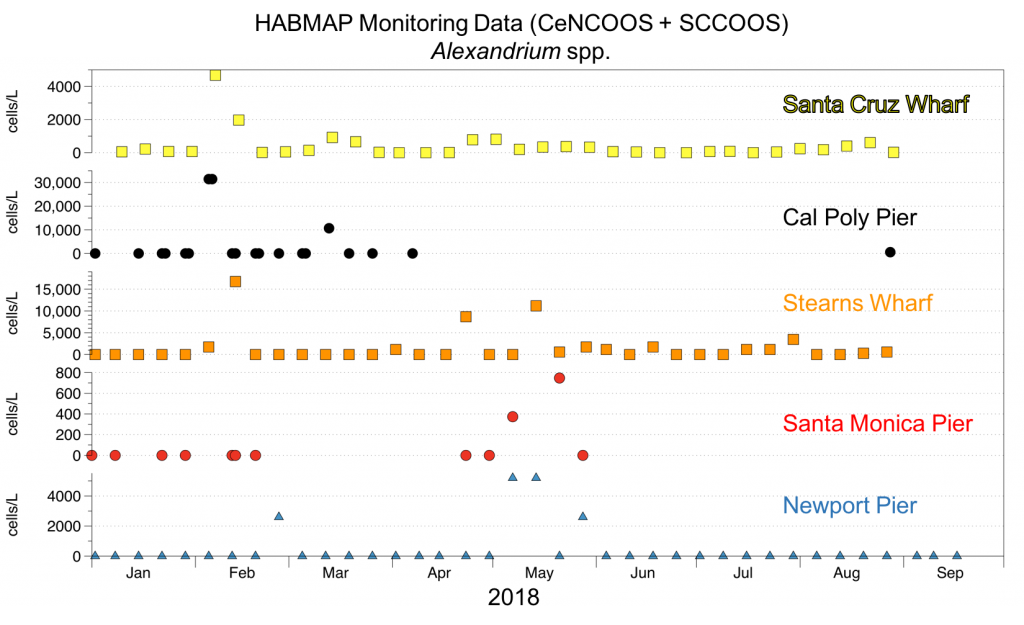
CDPH observations for Pseudo-nitzschia spp. and Alexandrium spp.
From 1-21 September 2018, water samples were collected by volunteers and sent to the California Department of Public Health (CDPH) for analysis. Pseudo-nitzschia spp. were detected in 38 of the 80 samples. Percent composition of Pseudo-nitzschia spp. was greatest on September 19th, 10th, and 4th at Humboldt Bay (60%, 50%, and 45% respectfully). Alexandrium spp. were detected at low levels (<1%) in 3 of the 40 sites sampled. You can also view CDPH weekly map layers of Pseudo-nitzschia and Alexandrium here. On September 13th, CDPH released an advisory to not eat recreationally harvested shellfish in Humboldt County due to dangerous levels of domoic acid that can cause Amnesic Shellfish Poisoning (ASP).
Note the annual mussel quarantine is still in effect. The mussel quarantine is an annual event that happens due to dangerous levels of biotoxins that may be present in mussels gathered by the public anywhere on the California coast, including bays, inlets, and harbors. For the latest closures and updates, please visit the California Department of Fish and Wildlife (CDFW) Health Advisories page.
Data are provided by the California Department of Public Health, Environmental Management Branch.
September 1st - 21st 2018
Pseudo-nitzschia spp. Percent Composition
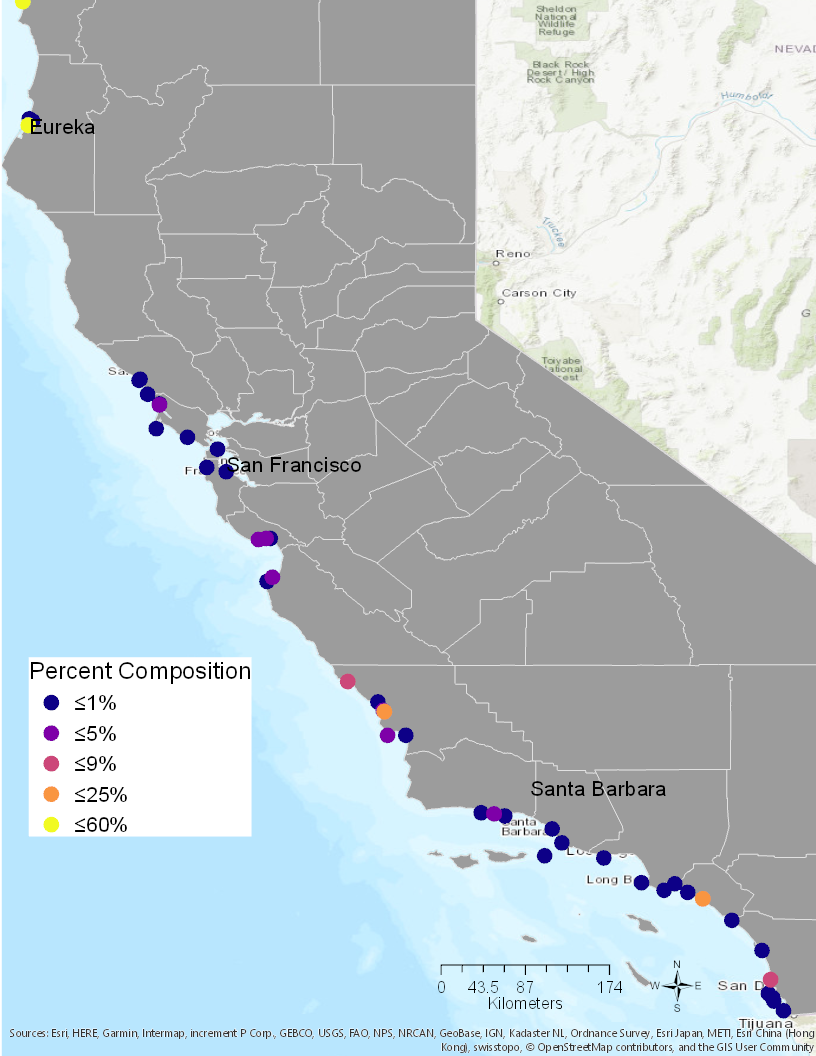
September 1st - 21st 2018
Alexandrium spp. Percent Composition
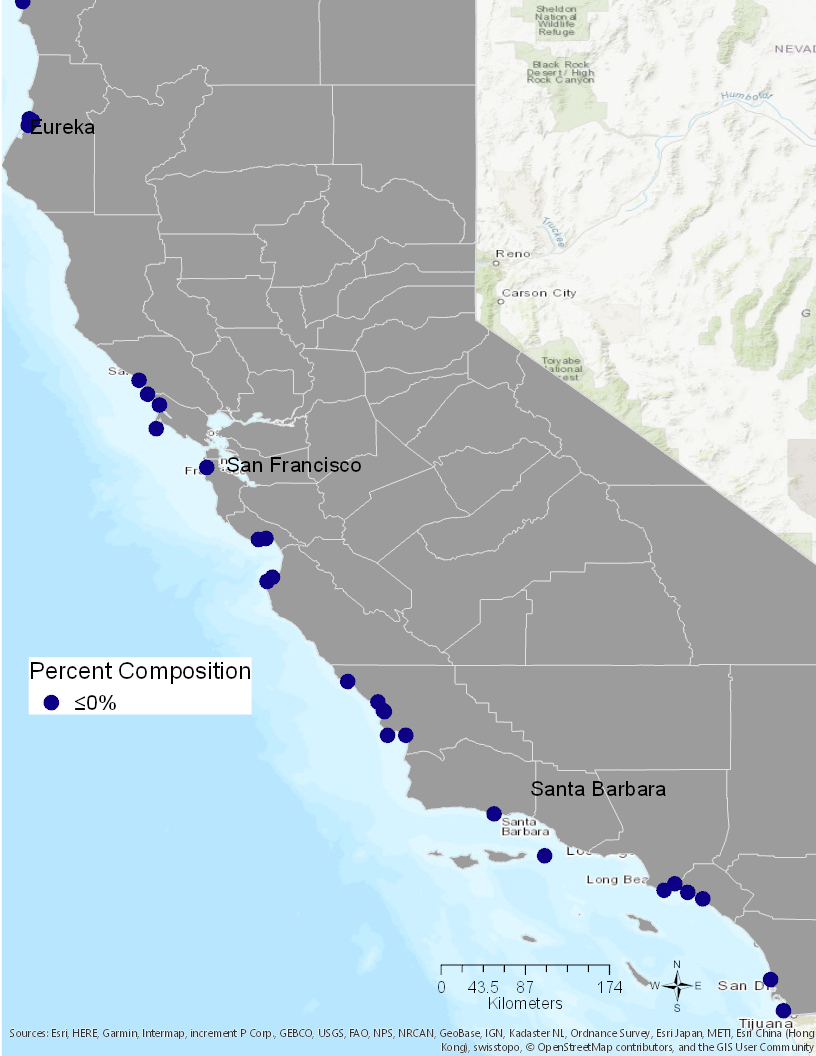
Central California Sea Lion Strandings from DA Toxicosis
The Marine Mammal Center in Sausalito, CA acts like an emergency room by working to rescue and rehabilitate sick and injured marine mammals, primarily California Sea Lions (Zalophus californianus). There have been a total of 78 sea lion strandings presenting with symptoms of domoic acid toxicosis since January 2018, with 1 sea lion stranding in the month of September. Malleah, an adult female, was found stranded on September 2nd in a parking lot off Orchard Parkway in San Jose, CA. Malleah was treated for domoic acid toxicosis and released on September 11th.
No DA toxicosis cases have been reported by the Pacific Marine Mammal Center in 2018.
September sea lion strandings due to DA toxicosis occurred at the following locations:
- San Jose, CA
